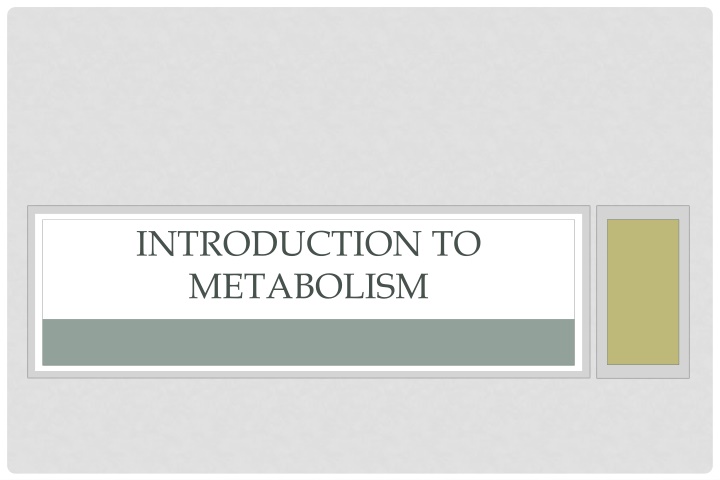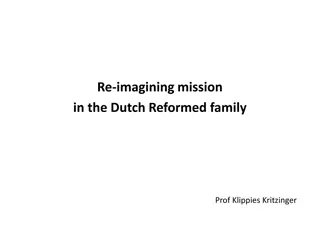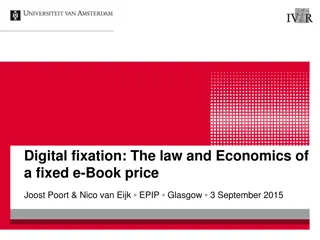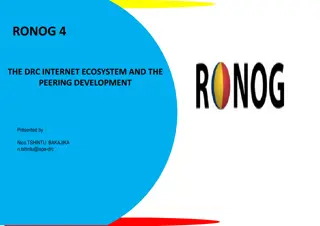Alteraciones de la función tiroidea en mujer de 70 años: Caso clínico y seguimiento
Mujer de 70 años con fatiga y antecedente de ACxFA. Recibe tratamiento con Emconcor. Pruebas revelan TSH baja y T4 elevada. Se inicia seguimiento endocrinológico con diagnóstico de Enfermedad de Graves Basedow. Se realizan visitas y pruebas complementarias. Exploración física y funcional del tiroides incluyen palpación, pruebas de laboratorio y técnicas de imagen.
Download Presentation

Please find below an Image/Link to download the presentation.
The content on the website is provided AS IS for your information and personal use only. It may not be sold, licensed, or shared on other websites without obtaining consent from the author.If you encounter any issues during the download, it is possible that the publisher has removed the file from their server.
You are allowed to download the files provided on this website for personal or commercial use, subject to the condition that they are used lawfully. All files are the property of their respective owners.
The content on the website is provided AS IS for your information and personal use only. It may not be sold, licensed, or shared on other websites without obtaining consent from the author.
E N D
Presentation Transcript
INTRODUCTION TO METABOLISM
OBJECTIVES By the end of this lecture the First Year students will be able to: Understand the concept of metabolic pathways Identify types and characteristics of metabolic pathways (anabolic and catabolic) Identify ATP as the energy source for cells
METABOLISM All the chemical reactions taking place inside a cell are collectively known as METABOLISM Metabolism consists of: Energy consuming (anabolic) pathways Energy producing (catabolic) pathways
PATHWAY VS CHEMICAL REACTION Metabolic Pathway A multi-step sequence of chemical reactions Product of first reaction becomes a substrate for second reaction Integrated pathways: Metabolism
GLYCOLYSIS IS A METABOLIC PATHWAY
METABOLIC MAP Different pathways can intersect to form an integrated and purposeful network of chemical reactions called The Metabolic Map
CLASSIFICATION Most pathways can be classified as: Catabolic Anabolic Pathways that regenerate a component are called cycles
ANABOLIC PATHWAYS Formation of precursor molecules into complex molecules Endergonic reactions (require ATP) A divergent process (few precursors form more complex products)
CATABOLISM VS ANABOLISM
COMPARISON OF CATABOLIC AND ANABOLIC PATHWAYS Anabolic Simple to complex molecules Catabolic Complex to simple molecules Endergonic Exergonic Involves oxidation Involves reduction Require NAD+ Require NADPH Convergent process Divergent process
AMPHIBOLIC PATHWAYS Amphi means dual Amphibolic: Both catabolic and anabolic Example: Krebs cycle is mainly a catabolic cycle but with some anabolic features Krebs cycle is used for the synthesis of glucose from amino acids It is amphibolic
ENERGY CURRENCY: ATP ATP + H2O ADP +Pi The free energy liberated by the hydrolysis of ATP is used to drive the endergonic reactions ATP is formed from ADP and Pi when fuel molecules are oxidized This ATP-ADP cycle is the fundamental mode of energy exchange in biological systems
ADENOSINE TRIPHOSPHATE (ATP) G -7.3 kcal/mol/bond
Energy rich compounds Transfer of electrons Energy-rich Reduced coenzymes Oxidation-Reduction in Metabolism Oxidized coenzymes
OXIDATION / REDUCTION Oxidation: Loss of hydrogen Loss of electrons Reduction: Gain of hydrogen Gain of electrons
REGULATION OF METABOLISM Intracellular signals: Substrate availability Product inhibition Allosteric activators or inhibitors Intercellular communications: Chemical signaling (hormones): Second messenger cAMP, cGMP Ca++/phosphatidylinositol
METABOLIC FUEL Carbohydrates and lipids (mainly) and proteins (little extent) are used for energy production Glucose and fatty acids are a major source of energy Amino acids are a minor source of energy Glucose is the major metabolic fuel of most tissues
ELECTRON TRANSPORT CHAIN (ETC) Sites for ATP Synthesis Electron transport and ATP synthesis are tightly coupled processes
TAKE HOME MESSAGE Metabolism is the sum of all biochemical pathways that occur inside the cells A metabolic pathway is a multistep sequences of enzyme-catalyzed reactions Catabolism is a convergent process that provides energy to cells in the form of ATP Anabolism is a divergent process that consumes energy for the synthesis of complex molecules Metabolic pathways are tightly regulated and highly integrated ATP is the energy currency of the cells
REFERENCES Lippincott s Illustrated Reviews, Biochemistry, 5th edition, Denise R. Ferrier, Lippincott Williams & Wilkins, USA, pp 91-94.










